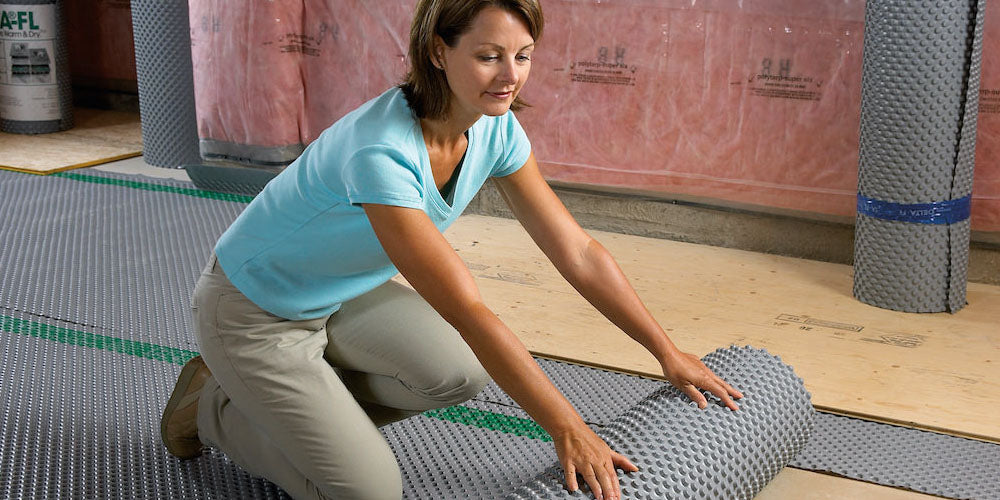
Create a Dry and Comfortable Finished Basement
Waterproof Basement Subfloor Options: A Comprehensive Guide
When it comes to finishing or renovating a basement, one of the most critical factors to consider is moisture control. Basements are notorious for being damp and prone to water damage, which can lead to various problems such as mold growth, structural damage, and an uncomfortable living environment. To combat these issues, investing in the waterproof basement subfloor is essential. In this comprehensive guide, we will explore the different options available, their pros and cons, and help you make an informed decision to ensure a dry and comfortable basement space.
Understanding the Need for a Waterproof Basement Subfloor
Before delving into the various subfloor options, it's essential to understand why a waterproof basement subfloor is crucial for your home. Basements are often below ground level, making them susceptible to moisture infiltration from various sources:
-
Groundwater: In regions with a high water table, groundwater can seep through the foundation walls and floor, causing moisture buildup in the basement.
-
Rainwater: Heavy rainstorms, flooding, or leaks in the foundation can lead to water entering your basement.
-
Condensation: Humidity levels in basements can be high, leading to condensation on floors and walls.
-
Plumbing Leaks: Leaking pipes or appliances located in the basement can introduce water into the space.
-
Snowmelt: In colder climates, melting snow can find its way into your basement, especially if the grading around your home is inadequate.
To protect your basement from these moisture sources, it's essential to install a waterproof subfloor. A proper subfloor will prevent water from seeping into your living space, reduce the risk of mold growth and structural damage, and provide a more comfortable and durable flooring surface.
Types of Waterproof Basement Subfloors
Several types of waterproof basement subfloors are available on the market, each with its advantages and disadvantages. Let's explore the most popular options:
1. Plastic Subfloor Tiles
Plastic subfloor tiles, also known as interlocking subfloor tiles or modular subfloor systems, are a popular choice for waterproofing basements. These tiles are designed to create a raised, ventilated surface above the concrete floor. They come in various materials, including PVC and polypropylene.
Pros:
-
Easy Installation: These tiles are easy to install, requiring no adhesives or special tools. They simply interlock like puzzle pieces.
-
Moisture Barrier: The gap created between the tiles and the concrete floor allows for airflow, preventing moisture buildup and mold growth.
-
Durability: Plastic subfloor tiles are resistant to moisture, chemicals, and impacts, making them a durable choice for basement flooring.
-
Insulation: Some models have built-in insulation, providing additional thermal comfort.
Cons:
-
Cost: While they are durable, plastic subfloor tiles can be very expensive compared to other options.
-
Performance: All the seams can create a challenge when dealing with a concrete basement floor.
-
Aesthetics: Some homeowners may not find the appearance of plastic tiles to their liking and may prefer a more traditional flooring surface.
-
Limited Sound Absorption: These tiles can be noisy to walk on, as they do not provide much sound insulation.
2. Dimpled Membrane Subfloor
Dimpled membrane subfloors consist of a roll or sheet of plastic with dimples or studs on one side and a flat surface on the other. These dimples create an airspace between the concrete floor and the finished flooring.
Pros:
-
Effective Moisture Barrier: The dimples create a capillary break that prevents water from seeping into the living space. Any moisture that enters the basement is shielded from the basement floor.
-
Quick & Easy Installation: Installing dimpled membranes can be done easily and requires very few tools. A solid DIY option.
-
Versatility: Dimpled membranes can be used with various finished flooring materials, such as hardwood, laminate, or carpet.
-
Sound Insulation: They provide some level of sound insulation, making the basement more comfortable.
Cons:
-
Cost: The cost of materials can be higher than some other options.
-
Limited Insulation: While they provide a moisture barrier, dimpled membranes do not offer significant insulation properties.
3. Epoxy Coatings
Epoxy coatings are a unique solution for waterproofing your basement subfloor. Rather than creating a separate layer, epoxy is applied directly to the concrete floor.
Pros:
-
Seamless Surface: Epoxy creates a seamless, waterproof surface that is easy to clean and maintain.
-
Durability: It is highly resistant to moisture, chemicals, and abrasion.
-
Aesthetics: Epoxy coatings can be customized in terms of color and finish, allowing for a visually appealing basement floor.
Cons:
-
Installation Complexity: Applying epoxy coatings requires specialized skills and equipment, making it a job best left to professionals.
-
Cost: The cost of epoxy coatings can be higher than other options, especially when factoring in professional installation.
-
Limited Insulation: Epoxy coatings do not provide thermal or sound insulation, so additional measures may be needed for comfort.
5. Engineered Wood Subfloor Panels
Engineered wood subfloor panels are a more traditional option for finishing a basement floor. These panels consist of layers of wood veneer that are bonded together, providing a stable and moisture-resistant surface.
Pros:
-
Aesthetics: Engineered wood panels offer a warm and natural appearance that some homeowners prefer.
-
Versatility: They can be used with various types of finished flooring, such as hardwood, laminate, or carpet.
-
Insulation: Engineered wood has some insulation properties, making it more comfortable in a basement environment.
Cons:
-
Installation: Proper installation is crucial to maintaining moisture resistance, and it may be more complex than some other options.
-
Cost: Engineered wood subfloor panels can be relatively expensive compared to plastic tiles or dimpled membranes.
-
Moisture Sensitivity: While they are moisture-resistant, engineered wood is not entirely impervious to water and can still suffer damage if exposed to prolonged moisture.
